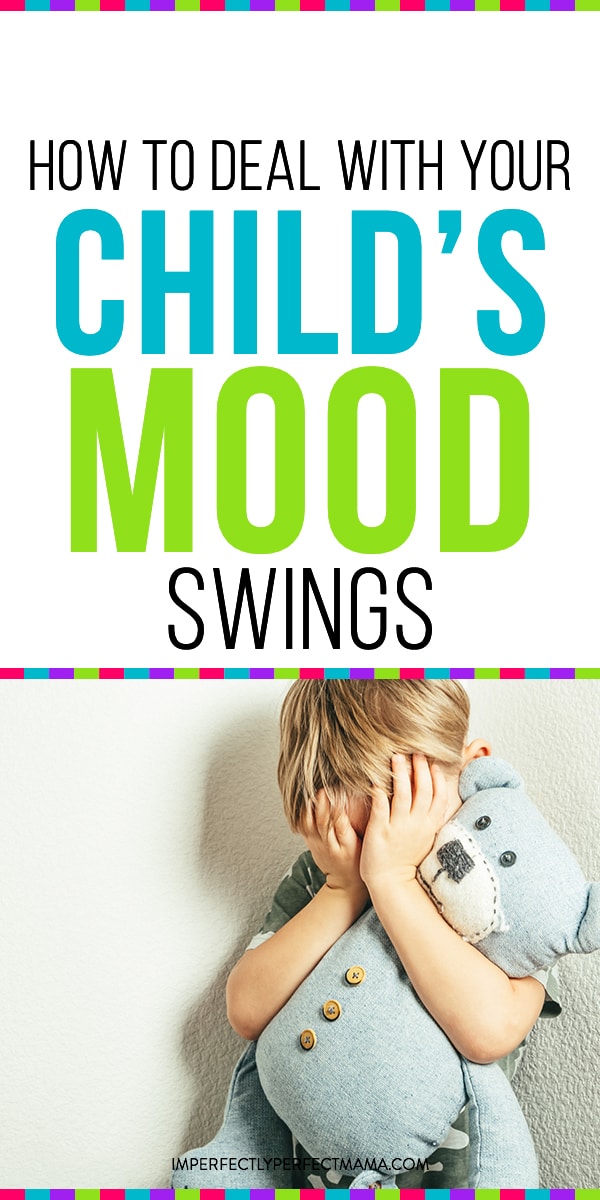Mood Swings/Tantrums might be one of the toughest things in parenting, whether it’s dealing with a whiny toddler or going for a ride on your teenager’s emotional roller coaster.

I have a 4,6, and 14-year-old, and the whining sounds are like nails on a chalkboard.
One minute I am the best mom in the world, and the next minute I am the worst mom in the world because I ask them to do their chores.
I know if I ask my boys how their day was and they respond angrily, “it was fine,” it in fact was not fine.
So what really is going on?
Kids are just learning to regulate their emotions, at times, it can seem like you are the only one going through it.
Mood swings/whining/fits are entirely normal in kids of all ages, sometimes when you are going through it, you feel like you are the only one in the world who is dealing with this, and meanwhile, your child is acting like it’s the end of the world.
But don’t worry, you are not alone.
Sometimes kids are trying to get your attention, and this is their way of getting your attention.
Remember, we are all human; even as adults, we have our moments.
If you help your child to deal with their emotions now, this can help them control their emotions for the rest of their life.
Here are some tips to help you get through this.
6 Easy Ways to Deal With Mood Swings In Your Child

1. Walk Away Before You Get Angry
With three kids, I have finally learned to do this.
You can’t help your child if you are experiencing anger. When they start to push your buttons, the best thing to do is walk away and find your calm. Yelling can turn into a power struggle.
Taking your time out and then defusing the situation will be the best way to resolve the mood swings. Understanding why your kids are whining or being moody can help squash it for good.
Once you are calm, you can focus on the solution. Don’t try and get to the root of the problem when your child is angry; this can push them further away.
Wait till they are calm; they will be more receptive to talking to you when they are relaxed, rather than being forced.
Suggest they take deep breaths and teach them some techniques to help them get calm.
2. Make Sure You are Supportive
So this behavior is coming from somewhere.
It’s essential to find out where the behavior is coming from.
The first step is to acknowledge their feelings. Ask lots of questions that will get to the bottom of their feelings.
The important thing is not to push if they aren’t willing to give up why they are acting this way, but it is essential to let them know you are here for them.
Wait until they are ready to talk about it; if you don’t push, they will come to you.
3. Stick to Your Boundaries
Stick to your boundaries; kids will try to push us and see how far they can go.
But it is essential that with our response, they will know how far they can go.
Make it crystal clear what behaviors you will tolerate.
4. Tell Your Kids to Take a Time Out
Suggest something fun or calming for them to do, “take a time out.” Show them something comforting that they can do when they are having an overwhelming feeling of emotions.
Show them a particular area in their rooms where they can take deep breaths or put music on to help them calm down. A special chair or maybe laying in their bed,
5. Don’t Take Things Literally
Try not to take what they are saying literally. Angry kids don’t understand how much words can hurt, especially when they are very aggravated.
6. Suggest Playing a Game with Your Kids

Playing with your child can not only bring you guys closer, but this can help diffuse the situation. Playing with your child can help calm them down.
You will always be the most important person to your child, even if it doesn’t seem like it. As a parent, these moments sneak up on us, and tweaking a few things can change the outcome.
What Can You Do to Try And Avoid Tantrums And Mood Swings?
Of course, this is the million-dollar question.
Planning your day out can help make your day go smoother.
What if you can help your child do the same? When children know what they are supposed to be doing can help keep the mood swings at bay.
My free routine checklist is entirely customizable for your child’s routine and visually shows your child what tasks they need to do next.
When kids know what is expected of them, this can relieve stress for you and your child. My game-changing visual routine chart includes 2 charts in 2 colors (one for morning routine and one for night routine), that can be printed at home with task cards that can accommodate many morning and nighttime routines. Download my free routine chart here.
There you go!
Let me know in the comments below what you do to help your child calm down during those mood swings.




Leave a Reply